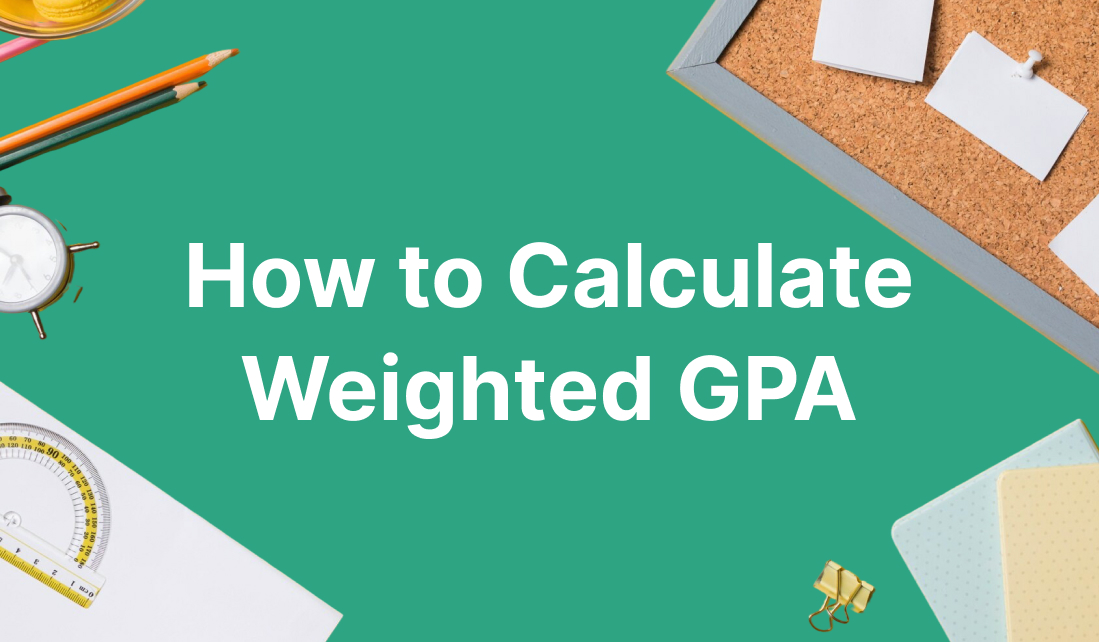
When navigating the college admissions process, students often hear about different ways their grade point average (GPA) is calculated. Two of the most important types are cumulative GPA and weighted GPA. While both measure academic performance, they do so in distinct ways that can influence how colleges evaluate an applicant.
At Spark Admissions, we can teach you all about weighted and unweighted GPA and how to plan for a semester GPA that will catch the eye of college admissions committees. Your grade point average is important, along with taking a variety of AP classes and other challenging high school courses.

What Does Cumulative GPA Represent?
A cumulative GPA is the overall grade point average of all the courses a student has taken throughout high school. This includes core GPA subjects like math, science, English, and history, as well as electives such as physical education and the arts. The cumulative unweighted GPA follows a simple average system, where each letter grade corresponds to a numerical value on a 4.0 scale—an A is worth 4.0, a B is 3.0, and so on.
Since many high schools calculate a cumulative GPA without considering course difficulty, it does not reflect whether a student has taken honors classes, AP classes, or dual enrollment courses. While this system offers a straightforward way to measure a student’s performance across all high school classes, it does not highlight the rigor of the curriculum.
How Weighted GPA Accounts for Course Difficulty
A weighted GPA adjusts for the difficulty of the courses a student takes by assigning extra points to honors courses, Advanced Placement (AP) courses, and International Baccalaureate (IB) programs. For example, while an A in a regular class may be worth 4.0, an A in an AP class might be worth 5.0. This system allows students who take more challenging courses to earn a higher GPA than those who take only standard-level classes.
Different high schools have varying GPA scales, but a typical weighted GPA system may look like this:
- Regular Classes: A = 4.0, B = 3.0, C = 2.0
- Honors Classes: A = 4.5, B = 3.5, C = 2.5
- AP or IB Courses: A = 5.0, B = 4.0, C = 3.0
By using a weighted system, schools can better highlight a student’s effort in challenging classes compared to a total grade point average without considering the type of class.

How to Calculate Weighted GPA
Calculating a weighted GPA involves assigning extra grade points to advanced coursework, such as honors classes, AP courses, and IB programs. Unlike an unweighted GPA, which uses a 4.0 scale to represent an average grade, a weighted GPA accounts for the difficulty of the classes a student is taking.
Step-by-Step Guide to Calculating Weighted GPA
Assign Grade Points Based on the Weighted Scale
In a standard weighted system, an A in a regular class is worth 4.0, while an A in an honors class might be worth 4.5, and an A in an AP or IB class could be worth 5.0. Schools vary in their weighting policies, but most use similar scales.
Multiply by the Credit Value of Each Course
Some high schools assign different credit values to courses. For example, a one-semester elective may be worth 0.5 credits, while a full-year honors class could be 1.0 credit. Multiply the grade points by the course’s credit value.
Add Up the Total Grade Points and Divide by Total Credits
After adding all weighted grade points, divide by the total number of credits taken. This provides the weighted GPA, which will likely be higher than an unweighted GPA if a student is taking classes that offer extra weight.
Check Your High School’s GPA Policy
Some schools cap the number of weighted courses that contribute to GPA, while others factor in all your grades from senior year and earlier. A high school transcript typically lists both the cumulative GPA and the weighted GPA to provide a complete picture of a student’s performance.
Understand How Colleges Use Weighted GPA
While most colleges consider weighted and unweighted GPAs, they may recalculate based on their own standards. A strong weighted GPA can help demonstrate a student’s ability to handle rigorous coursework, which is important in the college application process.
A student’s GPA matters, and students should balance challenging courses and maintaining strong grades during their high school academic career. Taking a mix of AP, IB, and honors classes while keeping up performance in other classes can create a well-rounded academic profile.
Cumulative GPA vs. Weighted GPA
Both types of GPA play a role in the college admissions process. Some colleges recalculate GPAs based only on core GPA subjects, disregarding electives. Others focus on weighted GPAs to assess a student’s academic rigor. In competitive admissions, a weighted GPA often holds more weight because it reflects a student’s ability to succeed in advanced classes.
However, a cumulative unweighted GPA can still be important, especially for schools that want to see consistency in academic performance.
Inside the College Admissions Committee Process
If you’re wondering if colleges look at weighted or unweighted GPA, they look at both. College admissions committees consider both numbers along with class rank, extracurricular activities, and standardized test scores when making decisions.
Admissions officers consider how rigorously a student has challenged themselves within their school’s system. A student with a strong core GPA who has taken AP courses, advanced placement classes, or college classes may be viewed more favorably than one with a perfect but unweighted GPA from less challenging coursework.
For example, a student with a highest unweighted GPA of 4.0 who has taken mostly standard courses may not be viewed as competitively as a student with a 3.8 weighted GPA who has been taking honors classes and multiple AP courses. The balance between maintaining a high letter grade and taking advanced courses is a key factor in the college admissions process.
By understanding how colleges evaluate GPAs, students can make informed decisions about their coursework. Choosing a mix of advanced placement, honors, and core academic courses can strengthen an application and demonstrate the ability to handle college-level work.
Get Expert Guidance from Spark Admissions
Understanding the difference between cumulative GPA vs. weighted GPA is crucial for students preparing their college applications. While weighted GPAs showcase course rigor, unweighted GPAs provide a clear, standardized measure of academic performance. Knowing how high school calculates and reports GPA can help students make informed decisions about their coursework, improving their chances of success in the college admissions process.
Navigating high school academics and preparing for college can feel overwhelming. At Spark Admissions, we provide expert guidance to help students build a strong academic and extracurricular profile that stands out in the competitive college admissions process. We can offer your student the tailored advice needed to maximize their GPA, strengthen their college applications, and achieve their goals. Contact us today to start your journey to success!


